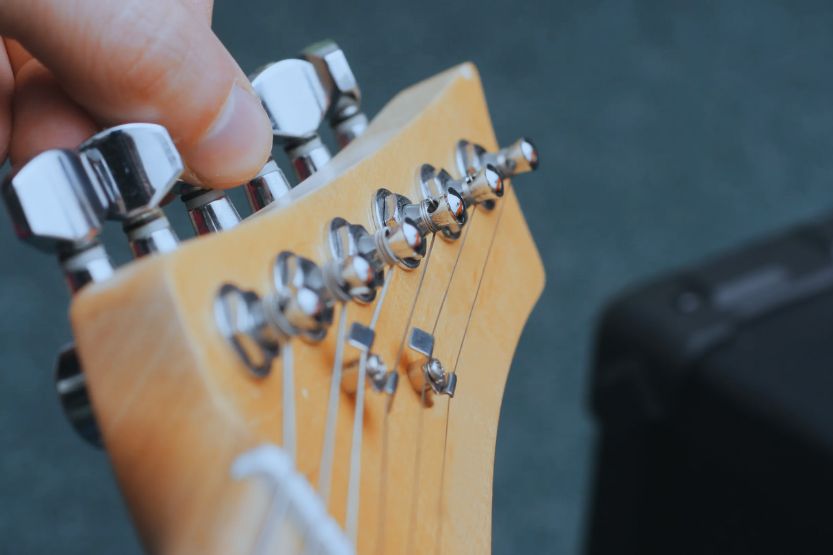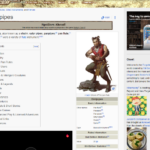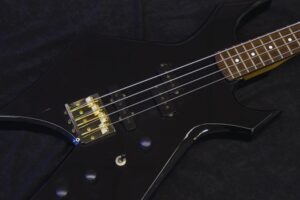Understanding how to play guitar strings is one of the basics of guitar playing. And if you are starting with the guitar, it is best to learn the notes on a guitar string by heart and memorize them before anything else. In this article, we’ll focus on the low E string.
What is low E on guitar? The low E is the thickest string and lowest-sounding note you can play on a guitar. It’s typically tuned to an E note, hence its name.
Read on to learn the basics of the low E string and how to tune guitar strings to E, including sample videos for easy understanding.
What Is Low E on Guitar?

The sixth string is the name given to the thickest guitar string. This string is set to E in standard guitar tuning. It is commonly referred to as the “low E string” because it produces the lowest possible sound when played.
The low E is the lowest-pitched string on a standard guitar and provides a strong fundamental tone that resonates throughout the instrument. The low E string on a guitar is sometimes referred to as “E2,” while its higher counterpart (the high E) is known as “E4.”
Here’s a YouTube video showing you the low E string sound on a standard guitar:
Why Are There Two E Strings on Guitar?
Required for Standard Tuning
I know it can be confusing, but there are two E-strings on the guitar for a reason. Standard tuning is the easiest and most common way to tune a guitar. The guitar strings are tuned one by one, from the thickest string (low E or 6th string) to the thinnest string (high E or 1st string).
It’s important to know that there are two E strings on a guitar because standard tuning requires it. If you were tuning your guitar without knowing how traditional tuning works, you might think there should only be one E string on a guitar.
Although the two strings have the same name, they have different sounds when played. They have an octave difference, so they don’t sound the same.
The strings have different thicknesses with varying frequencies of vibration. Because of this, there’s a difference in the pitch of the sound created, hence the octave difference between the two.
Difference Between the Two E Strings
The table below shows the difference between the two E strings:
| String Name | Guitar Position | Frequency |
| Low E | 6th (Thickest, top most string) | 82.41 Hz |
| High E | 1st (Thinnest, bottom-most string) | 329.63 Hz |
In other words, an octave change means a higher or lower pitch of a note. As the name suggests, the high E string or note will generate a high-pitched, shrill sound. On the other hand, the low E string will produce a deeper, more bass-filled sound.
To compare their sounds, here’s a Youtube video showing the sound of the high E string on a standard guitar.
Does Two E Strings Sound Better?
Depends on the Guitar’s Overall Build Quality
While it may seem like using two E strings would result in a better sound, that’s not always the case. An instrument’s sound depends on more than just string tuning, such as
- Instrument’s build quality,
- String quality, and
- Guitar player’s ability to produce a good tone.
For example, if you’re playing a cheap guitar with poor-quality strings, it doesn’t matter how you tune them — you won’t get a good tone. But if you’re playing on a high-end instrument with high-quality strings, then tuning them can make a big difference!
Get Rid of the Buzzing by Adjusting the Guitar’s Action
You can get rid of buzzing by adjusting the guitar’s action or having the frets filed by a professional. Action is defined as the height of the strings over the fingerboard, particularly the distance from the top of the fret and down to the bottom of the strings.
Guitar’s Action Determines Playability
The action determines the guitar’s playability. Generally, a higher action or greater distance from the top of the fret to the strings will be a bit more difficult to play. And a lower action closer to the frets will be easier to play.
Why Do Guitars Start with the E String?
1. Most Comfortable and Convenient Way
The placement of the strings “E A D G B E” has been determined by experts over centuries to be the most physically comfortable and musically convenient way of positioning the strings.
In this standard tuning, scales playing and chord transitions are very easy to perform while minimizing fret hand movements.
Playing the guitar requires a lot of chord switching, strumming patterns, and note plucking. And sometimes, chord transitions are difficult. They involve making quick sequential changes while simultaneously strumming and plucking a few notes.
2. Minimizes Tension
Guitars have larger scales with up to six strings and 24 frets compared with other stringed instruments like the violin, which only has four strings with a short scale.
Although the extra strings bring more bass, it might be difficult for beginners to make simple chord positions. Why? Because only four fretting fingers are available on a fretboard with six strings.
To alleviate this tension, early guitar players devised the idea of stringing the instrument to make it easier for guitarists to play. This enables guitarists to play major and minor scales on the frets and basic open chords with lesser tension.
3. Best Reference Point for Guitar Tuning
After many tests, the E string or note was the best choice to start the guitar. The E string is a reference point for tuning the rest of the strings.
What Is E Tuning?

E tuning, also known as standard tuning, involves tuning a standard 6-string acoustic or electric guitar. This tuning method is universally accepted and followed.
It uses the well-known E A D G B arrangement with intervals of 4ths and a single major 3rd between the guitar strings:
- E – A: 4th
- A – D: 4th
- D – G: 4th
- G – B: Major 3rd
- B – E: 4th
E A D G or the 1st four guitar strings are tuned in the same manner as an upright bass with intervals of 4ths between the open strings. The G string is separated from the B string by a major third interval, and then the next interval after that is a fourth interval, which gives us the notation E A D G B e.
If an interval of a fourth separates two strings, there will be a difference of four half steps between them. And if you pay attention to the musical scales at this point, you’ll realize that the tuning and names of the strings make perfect sense.
For example, in the musical scale, if you count four intervals after E, it would mean F#, G, G#, and finally, A. The tuning of the other guitar strings is done in the same manner as well.
Why Is the Interval of Fourths Followed on Guitars?
The tuning of other stringed instruments (e.g., mandolin and violin) follows the method of intervals of fifths. So you might be curious why the interval of fourths is followed when tuning the guitar.
There are four-step intervals on guitars due to the following:
1. Releases Some Tension in Your Hands
Playing simple chords, scales, and notes on a guitar are simplified by using four-step intervals.
2. Prevents a Step Gap Between the E and F Notes
Because the guitar is a large-scale musical instrument with 20 to 24 frets and six strings, tuning it using the P5 method would result in a half-step gap between the notes E and F. This would sound off when you play it as an open string.
Again, what is low e on guitar? The thickest or 6th string is tuned to E or low E string during a standard guitar tuning. The low E string is the lowest note you can play.
How Do You Tune Guitar Strings to E?
This is an excellent section for anyone looking for help tuning their guitar strings E. You can use this guide to properly learn how to tune your guitar without relying on a tuner or other device.
The process of tuning your guitar strings to E starts by adjusting the pitch of each string until it matches the note you’re trying to play. The most common method for this process is called “by ear,” meaning that you can hear when the string sounds in tune and adjust from there.
1. Listen to the Correct E Note to Adjust the Low E (The Sixth String)
As a point of reference for your E note pitch, you should listen to any example of a “correct” E note. You may, for instance, use this sample YouTube video and play it on your speakers. Alternatively, you could use a pitch pipe.
2. Tune the Remaining Strings Based on the Sixth String
A – The Fifth String
As soon as the E string is in tune, you can set your reference note aside. From this point on, you can tune the remaining strings based on the sixth string, which is now nicely tuned. If you play the 5th fret on the E string, you should get the same note as if you were playing the open A string:
- To do this, place your finger on the fifth fret of the guitar and play the E string first, followed by the A string.
- If the A string has a higher pitch, adjust the tuning peg to bring it down.
- Turn it the other way if it has a lower-pitched sound.
- Continue adjusting the tuning peg until you reach a point where the notes sound the same when played in unison.
D – The Fourth String
The 5th fret note you just tuned on the A string will be the same as the open note on the D string.
- You can play the two guitar strings in unison by putting your finger on the fifth fret of the 5th string and then ringing the open note on the 4th string.
- Listen to determine if the two notes sound the same, if they are in close discord, or if there is a gap in pitch between them. Make adjustments to the tuning peg until they’re playing in tune.
G – The Third String
So as you tune the 3rd string (G note), you should be familiar with the tuning process:
- You should be able to tune the open note of your third string by using the G note located on the fifth fret of your fourth string.
- Listen to it once more and determine whether or not they have a comparable sound.
- If not, continue adjusting the tuning peg until you get a matching sound.
B – The Second String
- If you place your finger on the fourth fret 3rd string, you can play a B, the same open note on the 2nd string.
- Make the necessary adjustments to your B string so that the two notes sound the same.
High E – The First String
So now we’re down to the last one: the high E string. Continue using the method that we have been working with:
- Put your finger on the 5th fret of the second string (B) to play an E that matches the open 1st string.
- Once more, rotate in a counterclockwise direction to raise the pitch, and rotate in a clockwise direction to lower it.
- You’re done!
How to Tell If Your Guitar Is Tuned Properly?

It is essential to know that a guitar is tuned correctly since it can affect your play. An out-of-tune guitar makes playing difficult and frustrating. Here are two main ways to tell if your guitar is out of tune:
1. Match Them Up with Another Instrument Like the Piano
This method is generally better if you want an exact match between your instrument and another one because it allows you to make minor adjustments without relying entirely on your ears alone (which may not always be accurate).
2. Use a Tuner App on Your Phone, Tablet, or Computer
This method works well if you want something quick and easy while playing live music in front of others, such as during an open mic night at a local bar or pub!
How to Remember Guitar String Names and Order
Learning the names of the guitar strings is an essential first step in learning how to play the guitar. Once you know the order of the strings, it will be much easier to remember what note a song is playing when you hear it on the radio.
The names of acoustic and electric strings are the same, from lowest (the thickest string) to highest (the thinnest string). And they read as follows: E A D G B E.
So the number order of the guitar strings is:
- 6 – E (Thickest string)
- 5 – A
- 4 – D
- 3 – G
- 2 – B
- 1 – E (Thinnest string)
To memorize these things in this order, you can use the tips and tricks listed below:
1. Use Mnemonics
Make up a sentence or rhyme that helps you remember the string names. For example, “Eat All Day Get Big Easy” will help you remember E A D G B E (the notes).
Other sample mnemonics include:
- Eddie Ate Dynamite, Good Bye Eddie
- Every Apple Does Good Being Eaten
- Elvis Always Dug Good Banana Eating
- Eric And Dave’s Guitars Beat Everyone
- Eat Apples Daily Grow Big Ears
- Every Amp Deserves Guitars/Basses Everyday
- Every Amateur Does Get Better Eventually
- Every Acid Dealer Gets Busted Eventually
- Elephants And Donkeys Grow Big Ears
- Even Average Dogs Get Bones Eventually
- Eat A Dog, Get Big Ears
- Eat All Dead Gophers Before Easter
- Every Apple Does Go Bad Eventually
2. Try Something Visual
Visualize a picture in your mind that reminds you of the note names or their order (for example, “Eric And Dave’s Guitars Beat Everyone” could be imagined as two men winning a band competition).
3. Memorize Backwards
With E being your guitar’s highest (thinnest) string, memorizing backward will help you remember E B G D A E notes. Below are a few examples to get you started:
- Every Boy Gets Dinner At Eight
- Easter Bunnies Get Dizzy At Easter
- Elvis’ Big Great Dane Ate Everything
Tip: Create your catchphrase to ensure it stays in your mind. Make it memorable too. The funnier, crazier, or more peculiar it is, the better.
4. Familiarize Yourself with the Fretboard
The guitar fretboard is a diagram of the frets and strings on your guitar. It’s used to show where notes are located on your instrument.
It can be overwhelming at first glance if you’ve never studied one before. The fretboard will look like a mess of lines and numbers that don’t make sense whatsoever.
But don’t worry, we can fix that. First, you need to memorize the notes on the fretboard. This will allow you to quickly locate any note on your guitar without thinking about where it is. It also helps understand chords, scales, and music theory.
Frequently Asked Questions – Low E Guitar String
What’s Low E on the Guitar?
Low E is the lowest-pitched string on a standard 6-string acoustic or electric guitar. It’s also known as the thickest string.
Why Are Guitars Tuned in E?
The reason is that it arranges the fretboard in a way that is both physically ergonomic and musically sensible.
Conclusion – Low E String on Guitar
When you’re learning to play the guitar, it’s essential to understand the different parts of your instrument. The sixth string is called “low E” in standard tuning, and it’s the thickest of all the strings on your guitar. It also produces a low sound when played.
Now you know the difference between the sixth string and other strings on your guitar. So next time you pick up your instrument, try playing some notes on each string to see how they sound. You can also try strumming chords to feel how they work together.
Read next:





![Acciaccatura and Appoggiatura Grace Notes [Guide] acciaccatura and appoggiatura grace notes](https://musicalinstrumentpro.com/wp-content/uploads/2022/09/acciaccatura-and-appoggiatura-grace-notes-150x150.jpg)



